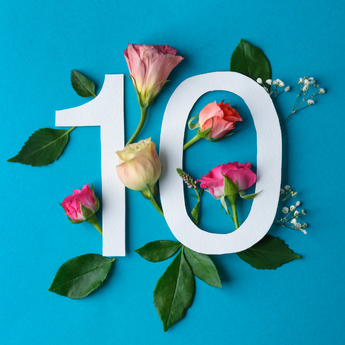In our monthly column, senior writer and editor Adriana Ermter shares her personal experiences with breast cancer.
By Adriana Ermter
A little more than two months ago, I started having weird pains in my right breast. It’s a throbbing sensation that radiates from the right side of my breast all the way to my nipple and then beneath my breast. Sometimes it happens when my arm leans into my breast, other times when I move my entire arm and once in a while, from the impact of my bra resting against my breast. Touching the area with my hands only intensifies the pain and since I seem to have zero impulse control, I find myself pressing into these spots all the time to check if the pain is still there. It is.
Naturally, I’ve gone worst-case scenario with my thoughts, fear flooding my brain as I think about the possibility of having a recurrence. But I gave it a week before acting. When the pain remained, I called my oncologist. Despite leaving several messages, they didn’t get back to me so I contacted my GP. She sent a note to my oncology team requesting an appointment. Then we waited. And waited. And then we waited some more. I’m no longer in active treatment and I’m in remission. Factor in the backlog of cancer patients (courtesy of COVID-19) needing to see a doctor, and I was and am clearly not a priority.
Tenacity is a Good Thing
Perseverance on my part, with stalker-like check-ins with my GP, and her ensuing requests to the breast cancer unit finally resulted in a response. Shockingly, it wasn’t the one I was looking for. My former oncologist wouldn’t see me. I was no longer considered his patient as I was in the cancer-free zone. His office passed me off to my surgeon. It took two rounds of requests from my GP to secure an appointment over the phone. When we did connect, my former surgeon said that because I had had Stage 1 cancer and my treatment had been successful, a recurrence was unlikely so he wasn’t sure that there was anything he could do for me. When I pointed out that it had been a year since my last screening, he conceded and said I should have a mammogram before fobbing me off on a new oncologist.
Securing an appointment with the new oncologist took a few more letters from my GP, but it was eventually booked and the visit was successful. The new oncologist was kind and thorough. She saw me in person, examined my breasts and listened to my concerns, agreeing that I was overdue for screening. I have dense breasts, so both a mammograms and an ultrasound were booked so as to thoroughly screen my breasts. An MRI may or may not follow depending on the results of the other tests.
When 50 is Not Just a Number
I’m happy the ball is rolling. The back and forth I experienced, coupled with needing my GP to help me navigate a medical system I am already a part of, along with the wait times was frustrating, though. Still, I know I’m one of the lucky ones. Because I’ve had breast cancer, I have an automatic check mark qualifying me for screening. Yes, the process took far longer than it should have and I still have to wait another month for the testing to occur, but I’m in. The appointment is booked into my calendar.
There are too many women though, especially those who do not have a personal history of breast cancer, do not a family history of the disease, do not have the BRCA1 or BRCA2 genes and are not exhibiting breast pain, swelling, warmth or redness, discolouration, a thickening in an area of the breast or underarm, discharge from or a crust on the nipple or a change in breast size or shape, who will not qualify for screening until their 50th birthdays. And no, I do not think this makes sense. I am one of the 18 per cent who are diagnosed before they turned 50 and I did not meet any of the risk factors.
But I knew my body. I knew the small hard mass I could feel through the skin of my right armpit was not supposed to be there. So when the slew of doctors who examined me and blew it off as a calcification, I listened to my gut, not them. I deserved to be taken seriously. All women do.
Being Proactive is Breast Friendly
Being proactive and being screened for breast cancer annually, particularly after the age of 40, is to be proactive about your health. The American Cancer Society says women ages 40 to 44 years should have the choice to start annual cancer screenings, while women ages 45 and up should receive screening every year. Think about it. The dentist runs X-rays on our teeth to check root health each year, the optometrist conducts a thorough eye exam every two years and even chiropractors and physiotherapists recommend annual treatments for optimal health. Heck, men undergo the cough and pull prostrate exam with their GPs every 12 months to eliminate the possibility of prostrate cancer. It just makes good sense to do the same for our breasts. And yet…
Making Canada Accountable
In Ontario, where I live for example, women can get an annual mammogram but only after they turn 50. In British Columbia, Nova Scotia, Prince Edward Island and the Yukon women may request their first mammogram after they are 40 years old. In Alberta and the North West Territories, women can get a mammogram after their 40th birthday, but their doctor must refer them. These flip-flopping regulations need to change in support of women’s lives. Sure, there has been a steady decline in overall breast cancer mortality rates since the later ‘80s, but a 2021 study by the Radiological Society of North America shows that breast cancer death rates have actually increased in women under the age of 40. And these women are definitely not getting an annual mammogram any time soon. At least not in Canada
To date, and as noted on the Canadian breast cancer screening website MyBreastScreening.ca, 75 per cent of breast cancers occur in women who do not have a familial history or any of the risk factors associated with the disease. The only way to decrease these numbers is to screen for breast cancer. Early detection can offer better outcomes. It can also decrease the amount of surgeries and treatments needed. So until everyone agrees on this practice nationwide, we need to advocate for ourselves, our breasts and our lives, even if the breast cancer journey has already begun. Demand provincial and federal healthcare reform and encourage all of the people in your circle to support women’s health by improving the medical options we have access to. It’s for our breasts’ sake.
Adriana Ermter is a multi award-winning writer and editor. Her work can be read in Figure Skater Fitness and IN Magazine, as well as online at 29Secrets.com, RethinkBreastCancer.ca, Popsugar.com and AmongMen.com. The former Beauty Director for FASHION and Editor-in-Chief for Salon and Childview magazines lives in Toronto with her two very spoiled rescue kittens, Murphy and Olive. You can follow Adriana on Instagram @AdrianaErmter







